Science Informing Management
How do discoveries impact the policies and management decisions made by the CA-CESU and other agencies? Science-informed decision-making is a core value of the CESU. Research is an important tool for informing management decisions, such as developing strategies on how ecosystems and organisms can adapt to climate change. Learn more about our science informing management projects below.
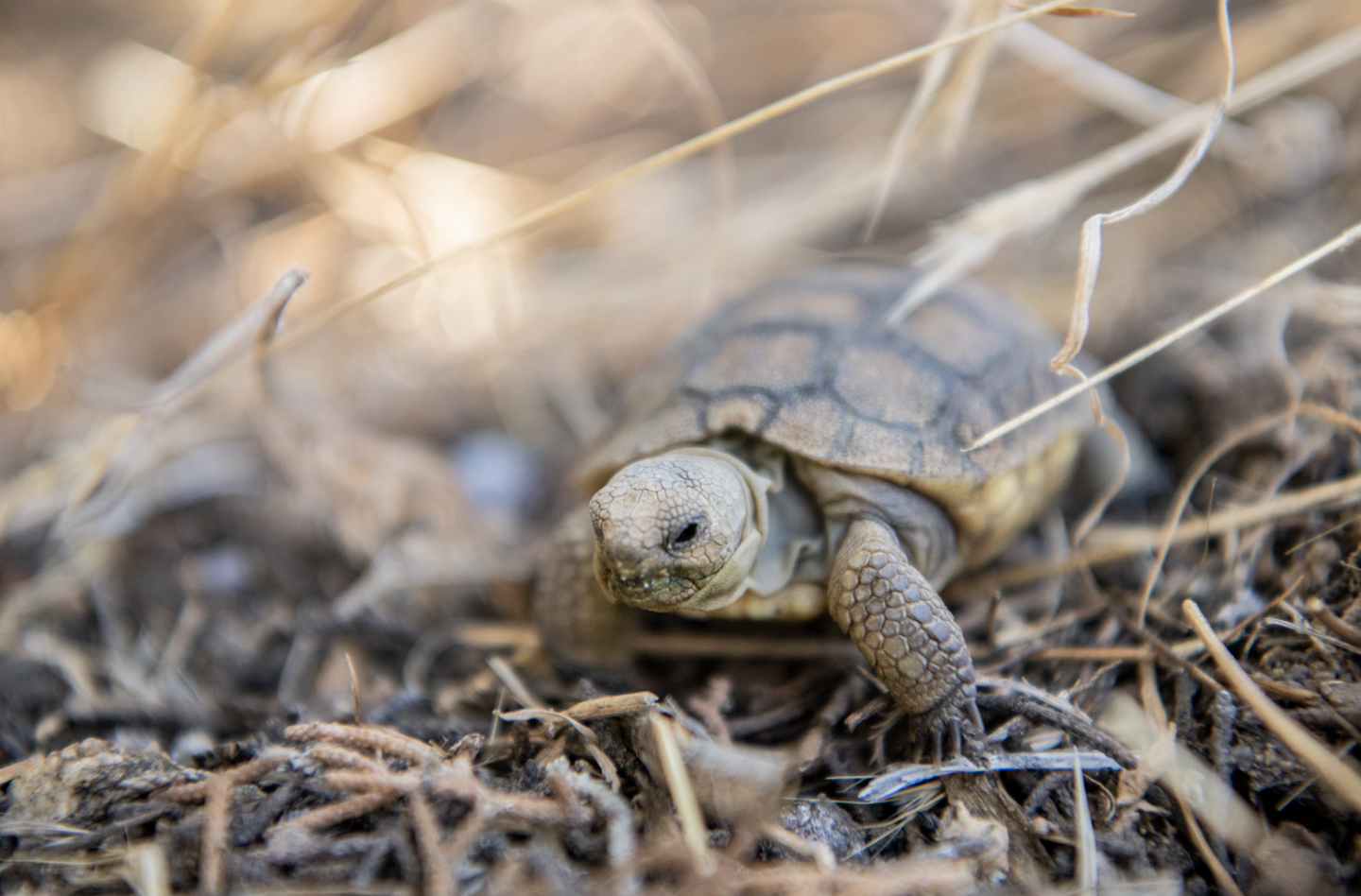
[image caption]
Desert Tortoise Project
Years Active: 2023 - 2028 (Phase III)
PI: Tracey Tuberville (University of Georgia)
The desert tortoise (Gopherus agassizii) has been listed as threatened under the federal Endangered Species Act since 1990. Native to the southwestern United States and Northwestern Mexico, the desert tortoise population remains on a decline across its range despite conservation efforts. 772,463 acres (48%) of Mojave National Preserve have been designated as critical habitat for the species. As part of ongoing conservation efforts Chevron Environmental Management, Inc. established The Ivanpah Desert Tortoise Research Facility in 2010 as a component of its compensation for a wastewater pipeline clean and removal project. In 2014 it was transferred to the National Parks Service. Since 2011, however, there has been ongoing research in collaboration with the Savannah River Ecology Lab of University of Georgia and University of California, Davis, on management tactics and population augmentation of the desert tortoise.
This project is currently in Phase III, identifying which combination of “head-starting” treatments (a conservation strategy where juvenile tortoises are raised in protected areas and later released into the wild), release habitats, and environmental conditions will result in the most successful establishment of tortoises in the wild. This research is crucial for desert tortoise conservation as a whole. The project will also monitor several other factors, such as environmental variables (temperature, precipitation,), predation by ravens and coyotes, drought versus non-drought years, to understand how these elements can also influence survivorship. Tortoise barrier fencing will also be installed along 5 miles of Cima road to evaluate the concept of reclaiming “lost” habitat and how it pertains to the conservation of the desert tortoise. Overall this project aims to determine the best population augmentation tactics for Gopherus agassizii to establish sustainable populations.

[image caption]
Improve Wildfire Recovery in National Parks & Beyond
Years Active: 2023-2028
PI: Kevin Koy (University of California, Berkeley)
NPS lands, which encompass 85 million acres, serve as critical refuges in a changing climate, support threatened species, and sequester millions of metric tons of carbon dioxide annually. A key climate change-driven challenge for the NPS is fire, and there is an urgent need to understand and address all challenges related to fire. While significant resources have been allocated to fire prevention and preparedness, there is very little ongoing effort to address recovery and how to effectively manage a landscape in the time-sensitive periods after it has burned.
To address these challenges, this project will develop data-enabled tools that empower park managers to decide the best ways to track and manage an area after it has burned, which will be increasingly common in the near future. While many tools have been developed to help detect and stop wildfires, the niche of using data science tools to help restore lands after a fire remains an underserved area. UC Berkeley’s Schmidt Center for Data Science and Environment (DSE) will collaborate with the NPS to make this work possible.
To learn more, please visit the Schmidt DSE website.
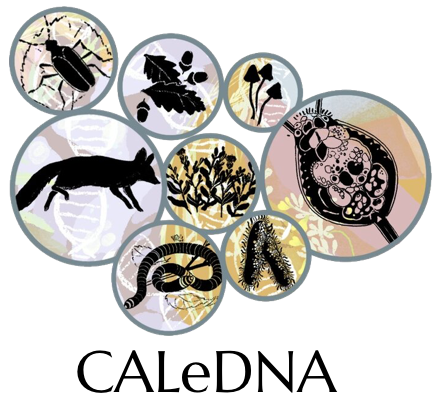
CALeDNA Services in Alaska’s National Parks
Years Active: 2024-2029
PI: Rachel Meyer (University of California, Santa Cruz)
Environmental DNA (eDNA) is an increasingly effective tool for detecting species of interest to national parks, such as threatened, endangered, invasive, and subsistence species. CALeDNA, a program run by the University of California Conservation Genomics Consortium based at UC Santa Cruz, facilitates eDNA work. This project seeks to detect and monitor species of interest using eDNA and genomics, through the CALeDNA program. Initially, it will focus on fish and aquatic macroinvertebrate species found in Alaska’s national parks. The project aims to create species-specific and universal primers, sequence DNA for un-sequenced species, and generate species gene maps from eDNA samples.
The project will also engage and train citizen/community scientists on how to properly collect, store, and transfer environmental samples to the CALeDNA laboratory at UCSC for processing. In addition, this project will train and employ young scientists and students in eDNA and genomics, and attune them to the needs of park managers working to protect biodiversity and restore habitat. This work will enable staff of parks and programs to use the expert services of CALeDNA without having to be experts in genomics themselves. Additionally, it will support the discovery, protection, recovery, and monitoring of native species, the identification, management, control, and eradication of invasive species, and the associated follow-up restoration activities. Looking forward, future funding may allow this work to expand, extending to other parks, regions, and species.
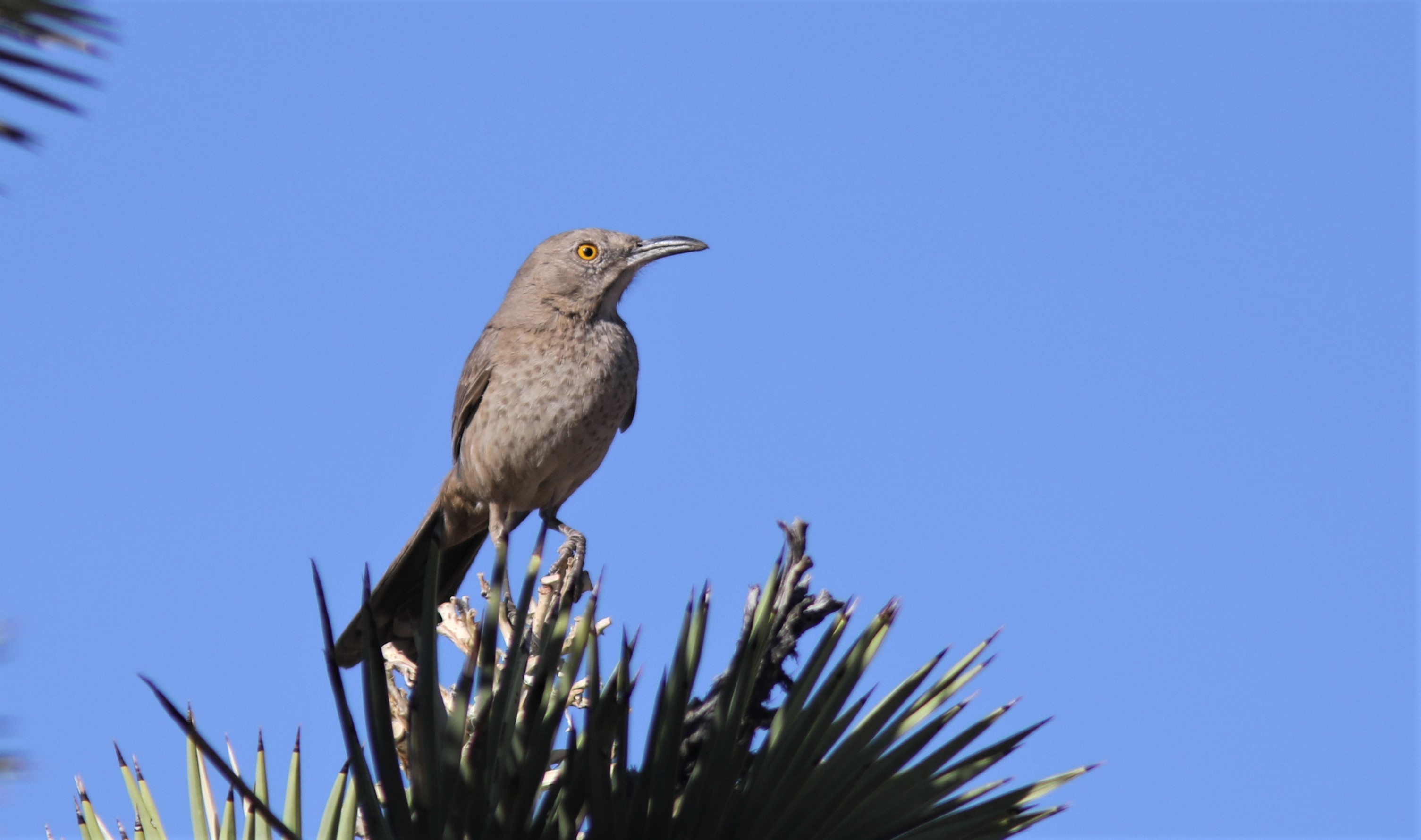
[image caption]
Assessing Avian Utilization of the Mojave National Preserve to Inform Conservation and Fire Management Plan Objectives
Years Active: 2024-2025
PI: Sam Veloz (Point Blue Conservation Science)
The Mojave National Preserve has been afflicted with three major wildland fires over the past 15 years, affecting over 206,000 acres. As a result, vegetation structure and composition have shifted dramatically, particularly for the Joshua tree and pinyon/juniper woodlands. Birds are expected to be particularly affected by these shifts. Birds comprise the greatest percentage of federally and California State listed species, species of concern, and sensitive species for the Mojave National Preserve. However, there is no fire management plan objective to protect or conserve these birds or their habitats. This is largely due to a lack of knowledge on the distribution and abundance of birds. The data exists, but it is disjointed and scattered across multiple files, sources of literature, agency records, university records, and other NGO records.
To help develop fire management plan revisions, this project seeks to compile bird information from these sources and synthesize it into a geospatial product that highlights important bird areas. This could be followed by opportunities for field observations to address gaps in information or verify existing data using point counts, breeding bird surveys, or other transect counts.

[image caption]
Ecology and Management of Phloeosinus in Giant Sequoia
Years Active: 2024-2029
PI: Seth Davis (Colorado State University)
Bark beetles in the genus Phloeosinus are increasingly reported in association with the decline of giant sequoia (Sequoiadendron giganteum) across the range of the species. The beetle infests weakened or challenged trees and likely hastens tree decline by damaging or killing tertiary and secondary branches, ultimately disrupting gas exchange and tree water balance. These beetles are an emerging native pest that may threaten the persistence of giant sequoia on the landscape. Despite this threat, there is currently little information on the basic ecology of Phloeosinus in giant sequoia, which prevents the development of integrated pest management approaches. This project seeks to learn more about the factors related to beetle behaviors, survival, and movement. This research will consider flight timing, how and when beetles move from the forest floor to the canopy, key thresholds for beetle survival, and potential beetle attractant or repellant tools. The project will also focus on generating new methods for beetle population control and tree protection tactics.
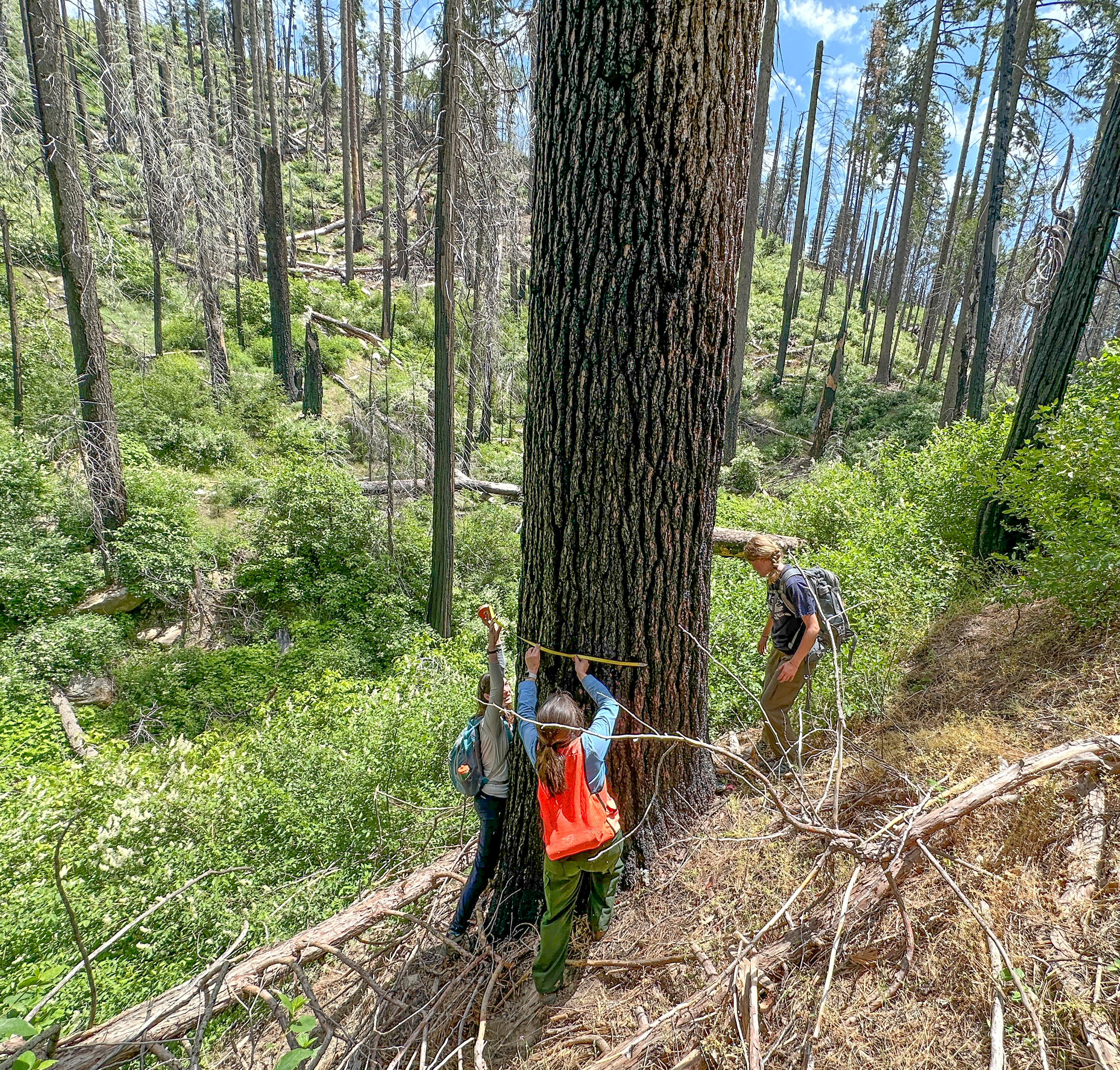
Studying Rust Resistance and Drought Tolerance of Sugar Pines in Yosemite, Sequoia, and Kings Canyon National Parks
Years Active: 2024-2025
PI: Joan Dudney (University of California, Santa Barbara)
The invasive white pine blister rust (WPBR) has contributed to dramatic declines in white pine species throughout North America. In Sequoia and Kings Canyon National Parks, the combined effects of WPBR, fire, drought, and mountain pine beetle have led to extremely high rates of mortality (54-80%) in sugar pines. Preliminary studies also indicate similar WPBR infection rates for sugar pines in Yosemite National Park. This project seeks to address these concerns by identifying and mapping potentially rust-resistant sugar pine trees in Yosemite, Sequoia, and Kings Canyon National Parks. This will involve extending a previous rust-resistant tree survey in Yosemite National Park to Sequoia and Kings Canyon National Parks. Additionally, the project will estimate variation in sugar pine growth rates and water-use efficiency, two traits that can be used to quantify variation in drought tolerance. Project findings will help inform future cone collection and planting of potentially rust-resistant sugar pines.
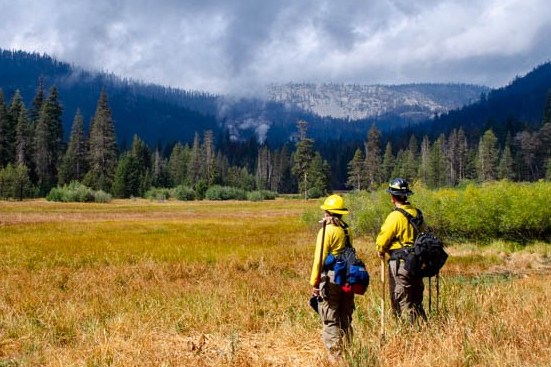
Adapting a Fire Management Plan to the Effects of the Dixie Megafire
Years Active: 2022-2024
PI: Alan Taylor (Pennsylvania State University)
A century of fire exclusion in Lassen Volcanic National Park has diminished the interactions between fire, vegetation, and terrain that regulated historical patterns of fuels, fire severity, and fire extent. In Lassen Volcanic National Park, prescribed fire and managed wildfire are the management tools used to reduce fuels and generate fuels/vegetation mosaics that will be resilient to future wildfires. Areas where fuels have been reduced from prescribed fire and managed wildfire can reduce severity of wildfires that burn through them at least for a decade or two. There is considerable concern that climate change can alter fire-vegetation/fuel interactions and increase fire severity particularly in areas that have not burned for a century or more. This research is focused on understanding how areas that were treated (prescribed fire units, managed wildfire units) and burned by recent large wildfires influenced the severity of the Dixie Fire to support fire management planning in Lassen Volcanic National Park.
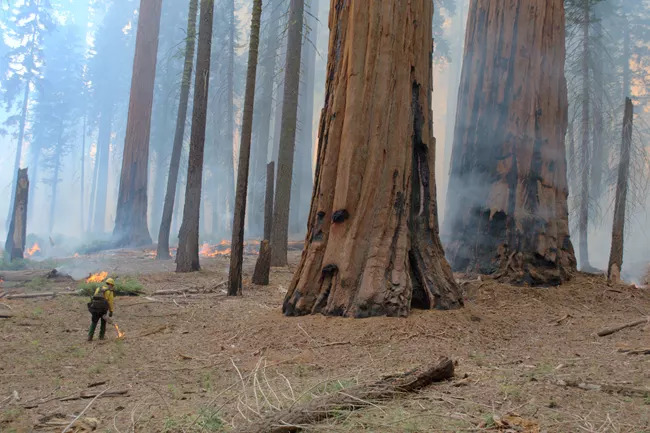
Post-Fire Forest Inventory in Sequoia and Kings Canyon National Parks
Years Active: 2022-2024
PI: Dr. Hugh Safford (University of California, Davis)
A century of fire suppression and high levels of tree mortality from the recent drought have put the conifer forests of Sequoia and Kings Canyon national parks at a substantially increased risk of catastrophic fire. Many important resources are threatened by such fires, including the iconic giant sequoia groves. For example, several groves burned in the recent Castle Fire, resulting in the death of a large number of monarch giant sequoias. The KNP Complex fire burned through over 75,000 acres of Sequoia and Kings Canyon National Parks in September and October of 2021 including over 18,000 acres of critical old growth Sierran Mixed-Conifer forest habitat.
There is a need for a post-fire inventory of keystone forest tree species to assess forest recovery and identify when and where to intervene with post-fire reforestation based on vegetation trajectories and a RAD (Resist, Accept, Direct) framework. Surveys for this project will include mixed conifer inclusive of sequoia groves. The overarching goals of this project are to assess levels of natural tree regeneration and tree mortality for mixed conifer forest in high severity areas in order to determine whether active reforestation might be needed to retain forest cover.

Providing eDNA Services through CALeDNA
Years Active: 2021-2025
PI: Rachel Meyer (University of California, Santa Cruz)
This project will enable parks and programs staff to use expert services of CALeDNA which is a program run by University of California Conservation Genomics Consortium. This partnership will help detect and monitor species of concern to parks and their habitats using eDNA and genomics. Using eDNA and genomics, this project focuses on developing species-specific and universal primers, sequencing DNA for un-sequences species, and creating species gene maps from eDNA samples. This initial part of the project will focus on aquatic invasive species. CALeDNA is enhancing the ability of national park units and programs to detect and monitor species of management concern within and adjacent to parks. This work will help protect the natural flora and fauna of national parks including Alaska anadromous fish, Alaskan algal blooms, and Hawaiian stream faunal assemblages.

Evaluating Natural Regeneration, Planted Seedlings and Fuels in Giant Sequoia Groves Managed by Sequoia and Kings-Canyon National Parks
Years Active: 2024-2027
PI: Kristen Shive (University of California, Berkeley)
University of California, Berkeley, in collaboration with Sequoia-Kings Canyon National Park, will conduct a research project evaluating natural regeneration, planted seedlings, and fuel conditions in Giant Sequoia (Sequoiadendron giganteum) groves within the park. UCB will carry out this project through revisiting previously established plots post-treatment, and establishing new plots, measuring surface fuels, overstory trees, ladder fuels, ground cover, and canopy cover. Another aspect of this project is seedling monitoring, which will be approached in two ways. The first will be monitoring the effectiveness of the treatment by revisiting past plots and installing new plots. Data on seedling height, diameter, percent competing vegetation, live/dead status and mortality agents will be collected. The second will be conducting a seedling competition study through collecting data on 1,917 seedlings planted across a gradient of competition and from varying genetic sources. Soil moisture and temperature will also be recorded. UCB and Sequoia-Kings Canyon National Park will work together to further our understanding of Giant Sequoia regeneration, reaction, and regrowth during rapidly changing conditions of our planet.
